KATSUYA (가쯔야)
8.0Km 2021-03-18
46, Dadong-gil, Jung-gu, Seoul
+82-2-772-9023
This Japanese cuisine is located near Euljiro 1(il)ga Station, Seoul. The representative menu is pork cutlet. A restaurant serving Japanese-style pork cutlet.
Libuk Sonmandu (리북손만두)
8.0Km 2019-08-28
17-13, Mugyo-ro, Jung-gu, Seoul
+82-2-776-7361
Libuk Sonmandu restaurant is located deep in the alleys behind Seoul City Hall in the Mugyo-dong area. It is famous for kimchimari bap and sonmandu (handmade dumplings). Kimchimaribap is rice in a soup of kimchi and ice cubes with various added flavorings that originated in North Korea. This is a refreshing dish for summer. Other items on the menu are bindaetteok (mung bean pancake) and mandu jeongol (dumpling hot pot).
Yonggeumok (용금옥)
8.0Km 2020-06-09
24-2, Dadong-gil, Jung-gu, Seoul
+82-2-777-1689
Yonggeumok's specialized stew includes tofu, fried tofu, spring onion, onion, oyster mushroom, tree ear mushroom, and other condiments added to broth boiled with lamb and its intestines overnight. Pre-cooked loaches are added in the end, creating a spicy yet savory flavor with chewy texture (loaches can be ground upon request). The restaurant serves Gyeongsang-do style, Jeolla-do style and Seoul-style chueo tang (loach stew).
Teatro Nacional Jeongdong (국립 정동극장)
8.0Km 2021-12-28
Jeongdong-gil 43, Jung-gu, Seúl.
Caminando por el camino de las paredes de piedra del palacio Deoksugung, llegará al Teatro Nacional Jeongdong, que es un espacio cultural y artístico cercano a los ciudadanos de la zona. Fue inaugurado en el año 1995 bajo el objetivo de desarrollar y difundir el arte tradicional de Corea, introducir las actividades culturales en la vida cotidiana y fomentar la cultura artística en la educación. Durante un largo tiempo ha estado promoviendo una variedad de espectáculos de arte y facilitando a las personas que puedan disfrutar de él. Debido a estos esfuerzos y actividades que ha estado realizando el teatro, hoy en día, se ha ubicado como lugar tradicional y cómodo para apreciar las actuaciones.
Podrá disfrutar de las representaciones tradicionales permanentes y de las actuaciones exclusivas durante todas las épocas del año. El espectáculo tradicional permanente se estableció en el año 1995, y consta de las funciones de danza tradicional, interpretación musical de los instrumentos tradicionales, espectáculo de Samulnori, etc.
Especialmente en 2010, se lanzó “MISO”, la marca de los espectáculos permanentes, con el estreno del musical tradicional “Chunhyang Yeonga ("Historia de Amor de Chunhyang”), a fin de promocionar el valor y la belleza de la cultura coreana no solo a los turistas extranjeros sino también a todo el mundo. Recientemente, la segunda historia de MISO “Baebijangjeon” es apreciada tanto por los coreanos como por los extranjeros.
Mapo Sutbul Galbi (마포숯불갈비)
8.0Km 2021-03-25
9-1, Dosin-ro, 53-gil, Yeongdeungpo-gu, Seoul
+82-2-841-2729
This is a place where you can enjoy Korean pork ribs personally cooked by the owner. This Korean dishes restaurant is located in Yeongdeungpo-gu, Seoul. The most famous menu is grilled spareribs.
Haengbokan Kongiyagi (행복한콩이야기)
8.0Km 2021-03-22
89-11, Supyo-ro, Jongno-gu, Seoul
+82-2-2274-2247
A hidden restaurant frequented by workers in Jongno. This restaurant's signature menu is bean sprout and rice soup. This Korean dishes restaurant is located in Jongno-gu, Seoul.
Tiendas de Hanbok del Mercado Gwangjang (광장시장 한복매장)
8.0Km 2024-02-01
Changgyeonggung-ro, 88, Jongno-gu, Seúl
Maknae Heo Center (막내회센타)
8.0Km 2021-03-25
7, Dosin-ro, 53-gil, Yeongdeungpo-gu, Seoul
+82-2-844-6150
It is a store where you can enjoy fresh seafood. The best menu at this restaurant is assorted sliced raw fish. This Korean dishes restaurant is located in Yeongdeungpo-gu, Seoul.
Bugeogukjip (북어국집)
8.0Km 2020-06-17
38, Eulji-ro 1-gil, Jung-gu, Seoul
+82-2-777-3891
Bugeogukjip (formerly “Teojutgol”) is a restaurant behind City Hall in Seoul that has been serving up authentic dried Pollack soup since 1968. Despite a name change, the restaurant has proudly stood in this same location for decades, earning a strong reputation for its dried Pollack soup made using traditional cooking methods.
Since the restaurant only serves one thing—dried Pollack soup—there are few preparations to be made and the meal arrives on your table in minutes. Customers are free to serve themselves basic side dishes such as kimchi and can have as many servings of rice as they’d like, allowing diners to enjoy a hearty meal at a low price. While the restaurant’s design and menu may be simple, Bugeogukjip takes pride in its long history and the careful efforts that have earned it a reputation as one of the most notable restaurants in Seoul.
Mercado Gwangjang (광장시장)
8.0Km 2024-05-17
Changgyeonggung-ro 88, Jongno-gu, Seúl.
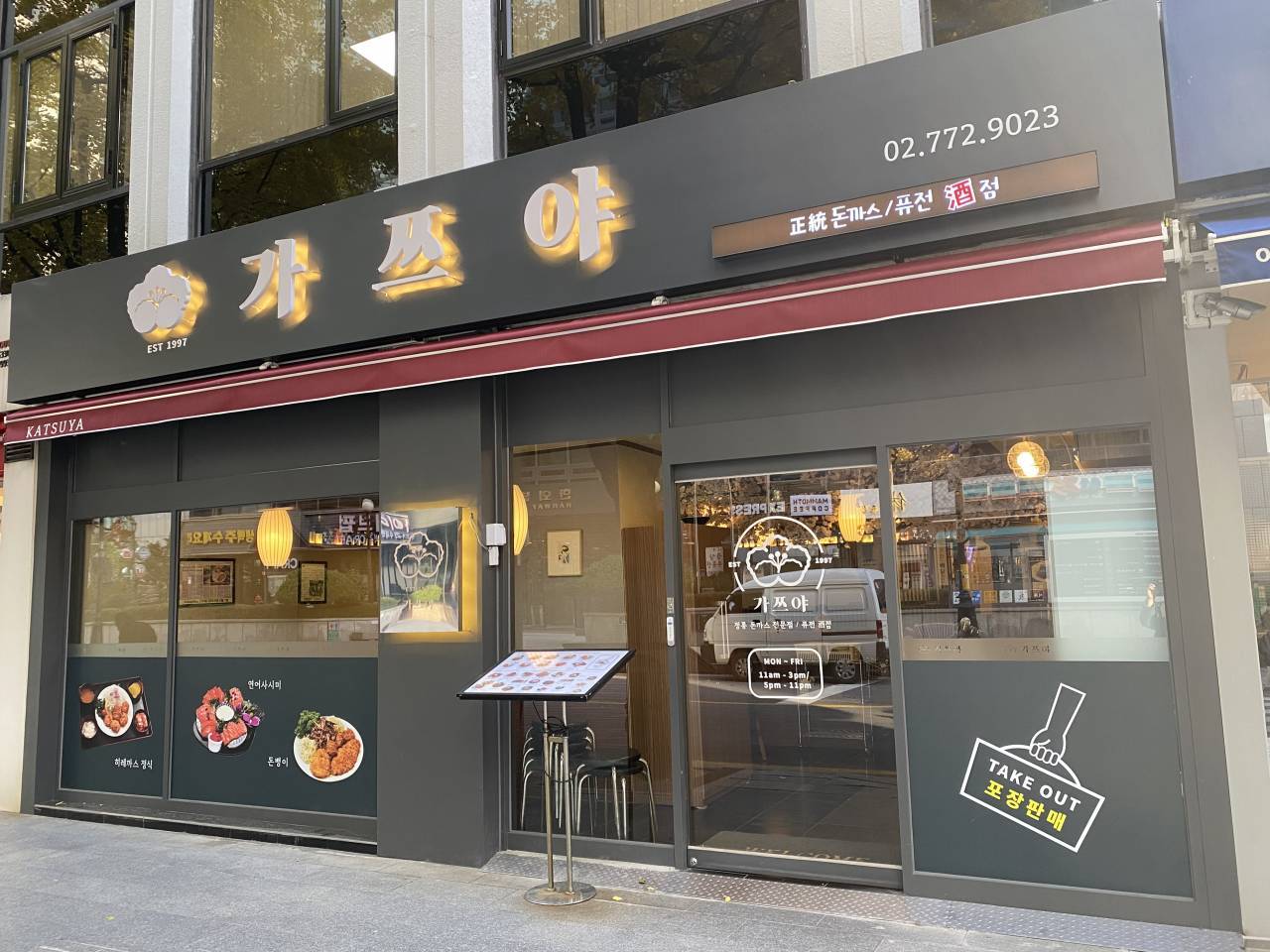
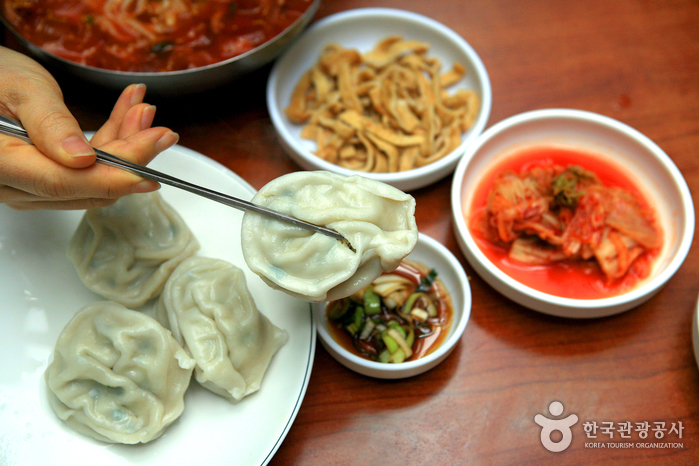
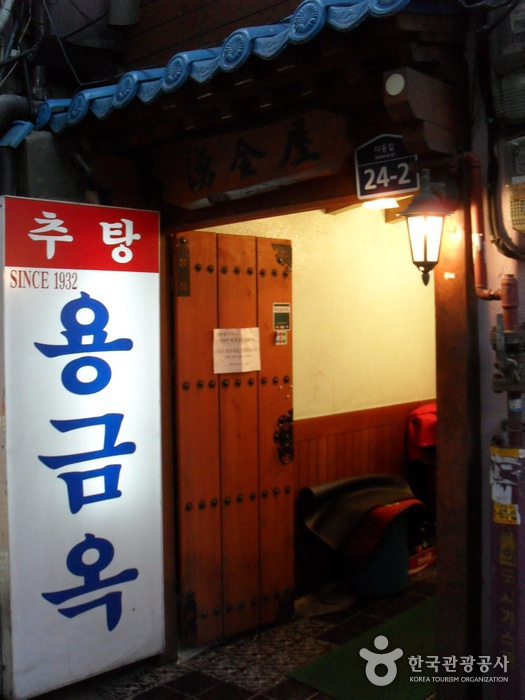
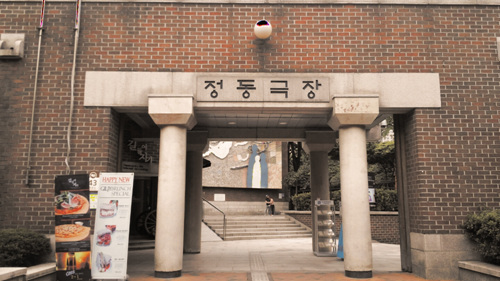
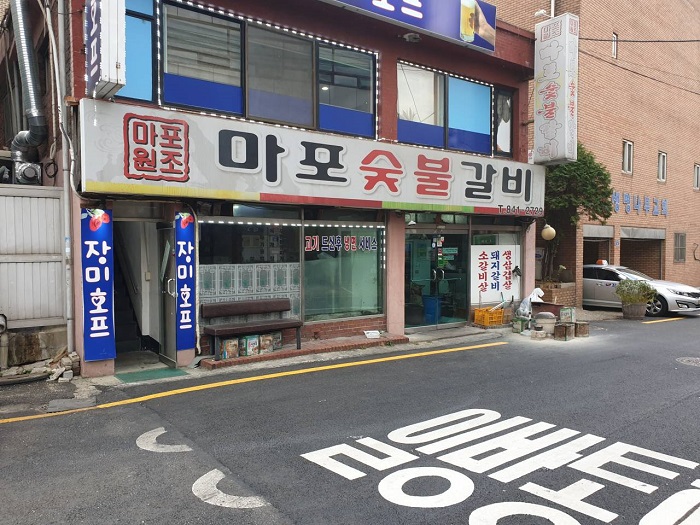
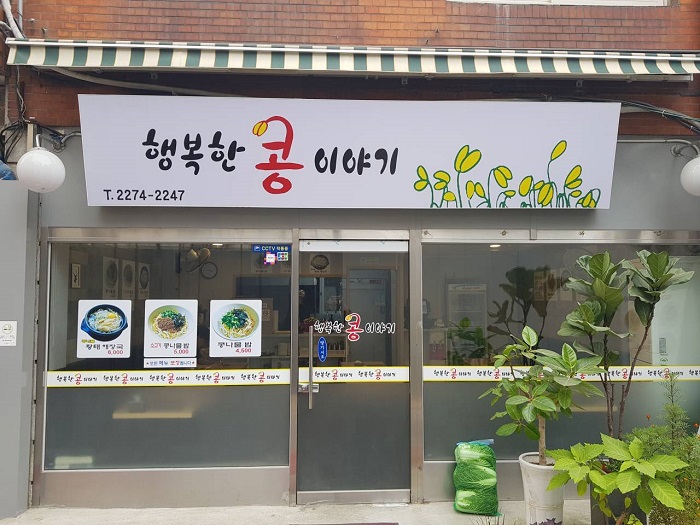
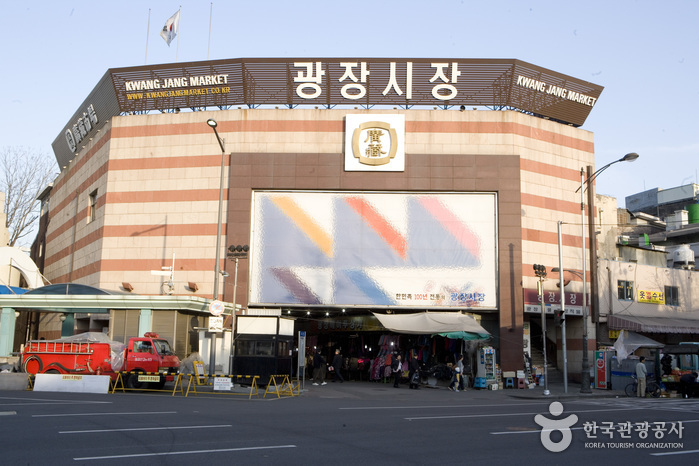
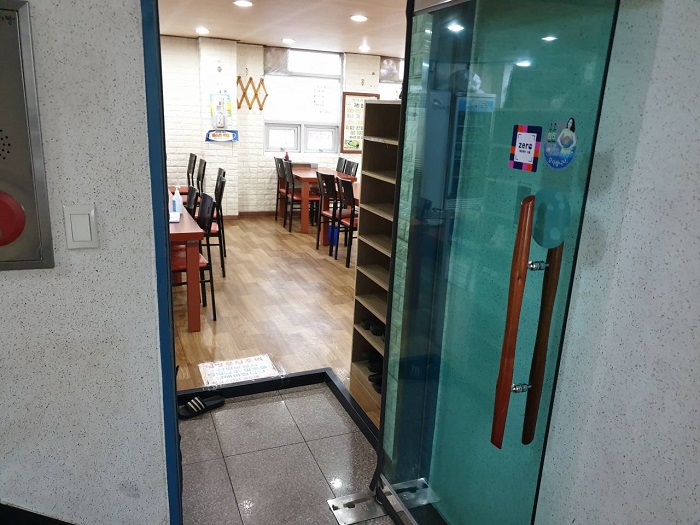
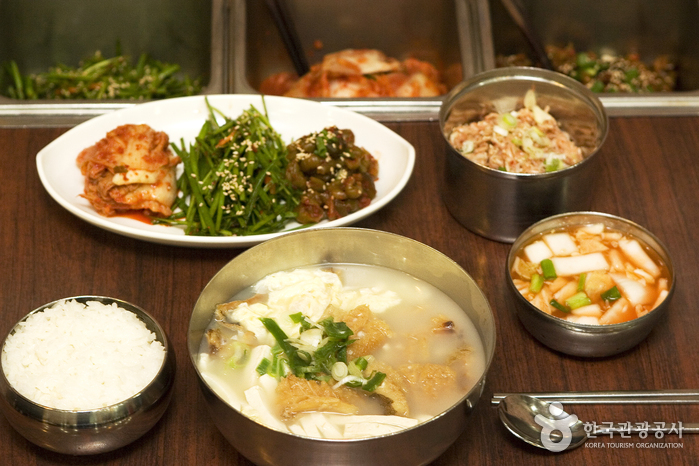
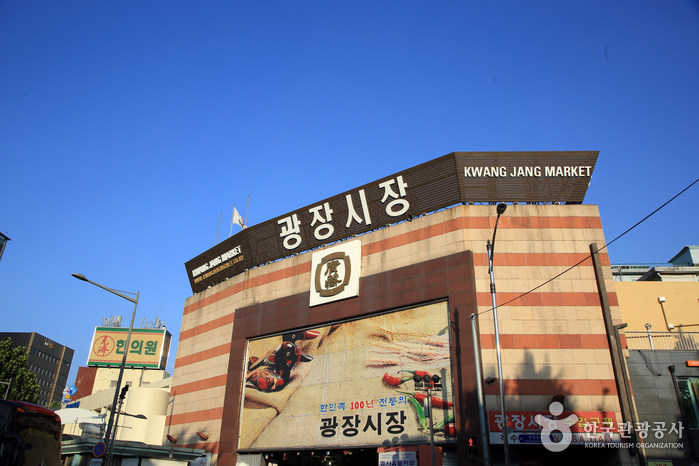
 Español
Español
 한국어
한국어 English
English 日本語
日本語 中文(简体)
中文(简体) Deutsch
Deutsch Français
Français Русский
Русский